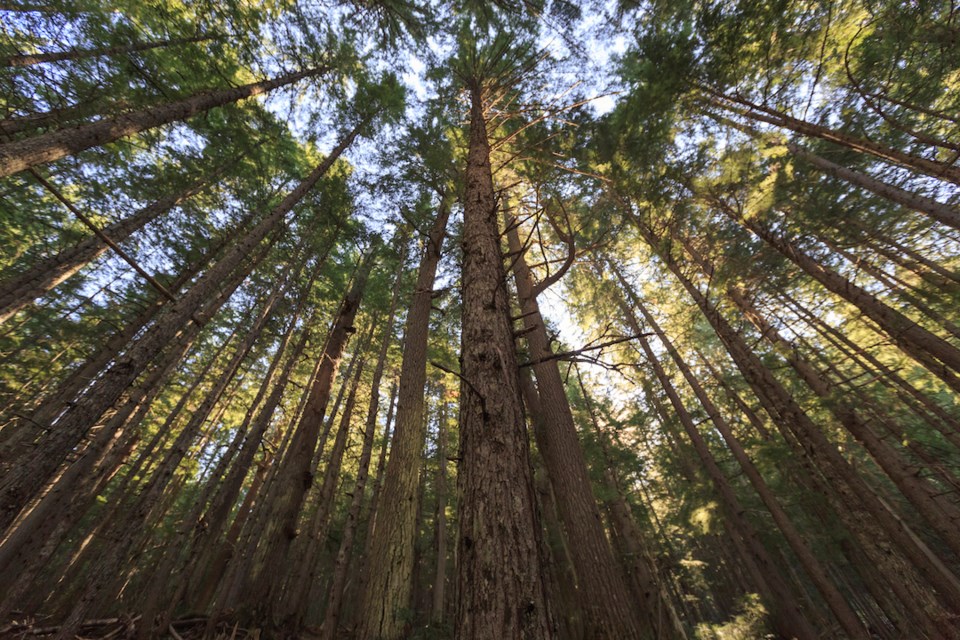There were more questions than answers at the Feb. 17 Sunshine Coast Natural Resource District Timber Supply Review public information session.
The online event was hosted by a handful of Ministry of Forests, Lands, Natural Resource Operations and Rural Development (FLNRORD) staff to explain and get input on that review and a pilot-project Forest Landscape Plan in the district. Both will shape future forestry operations in the timber supply area (TSA) on the Coast.
A couple dozen audience members signed in for the discussion. Multiple members of the Sunshine Coast Regional District (SCRD) Board and staff as well as representatives of local community and environmentally-focused groups attended. Those included the Sunshine Coast Conservation Association, Powell River Parks and Wilderness Society, Elphinstone Logging Focus, Atl’ka7tsem/Howe Sound Biosphere Reserve, and others.
The Zoom meeting’s chat function filled up quickly with a range of questions related to wildlife habitat protection, setbacks from park boundaries, biodiversity, protection of old growth recruitment forests and adjusting forestry operations for climate change. Many were summed up by SCRD Area E director Donna McMahon’s question about how to achieve better management of a wide variety of “downstream effects” on the community from logging operations.
The local natural resource district spans from the Gibsons area to Bute Inlet. In 2021, its timber harvesting land base was about 189,000 hectares, with an annual allowable cut of 1.2 million cubic meters per year.
Timber supply reviews are conducted every 10 years, with the most recent one conducted in this district in 2012. An initial Forest Landscape Plan for the area will take direction from strategic level documents like the TSA and determine where cutting will be allowed and how that work can be done.
That document is one of four being developed in the province under pilot-projects. FLNRORD states that process will provide more clarity in operating plans and cutting permit allocations. FLP’s cover planning for BC Timber Sales and commercial tender holders but not volume-based tenures like the Sunshine Coast Community Forest or tree farms.
In closing the event district manager with FLNRORD, Derek Lefler, said that the meeting “lays the foundation” and that discussions would “get to the meat of the TSA in next the session."
He noted that the public input process remains open to Feb. 26 and comments can be sent to [email protected].
“We do not have the up coming dates set for the Sunshine Coast Natural Resource District Timber Supply Review Analysis Public Information Session, but when we do we will ensure that the local newspapers are included in the invitation,” resource technologist with FLNRORD, Whitney Peters told Coast Reporter via email on Feb. 22.



